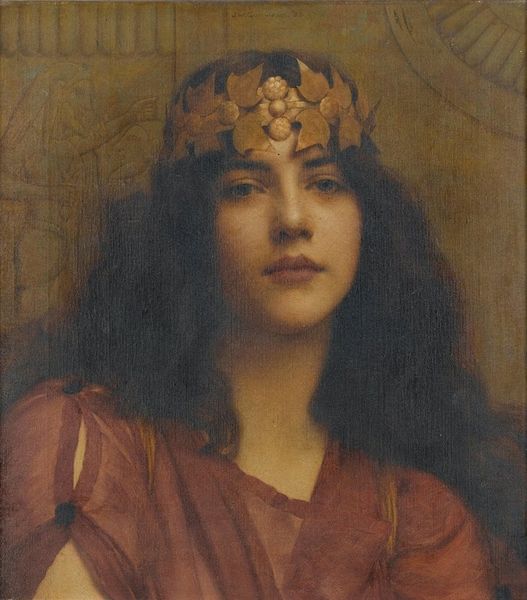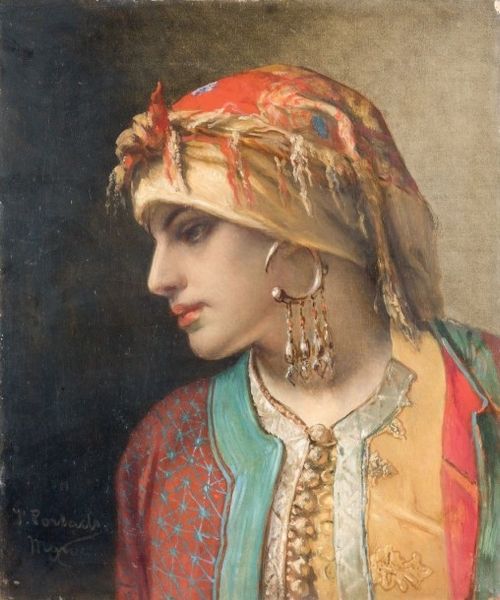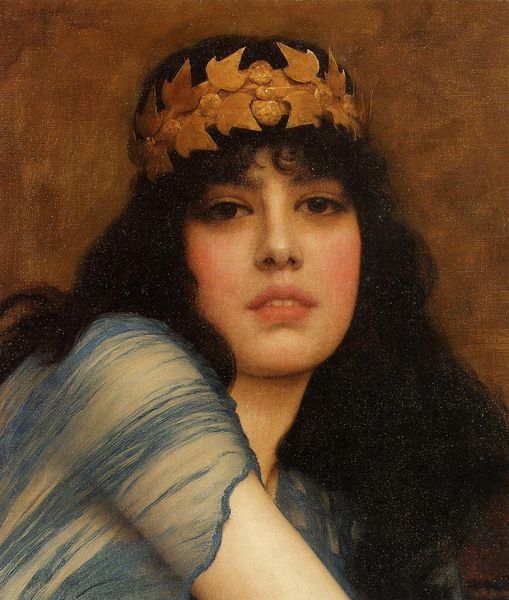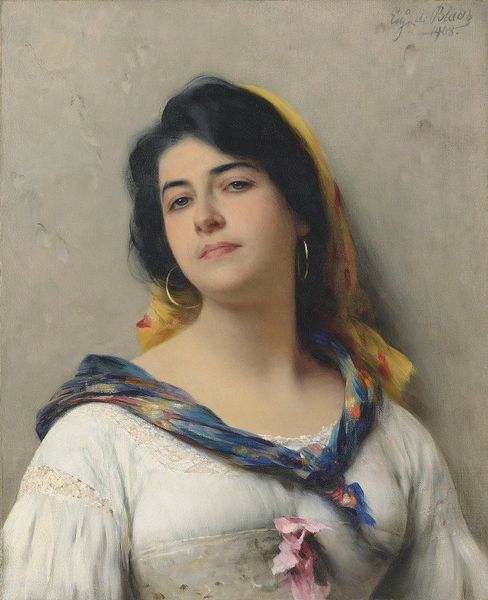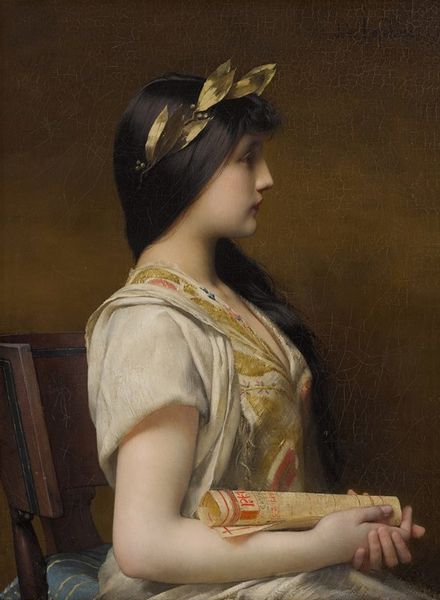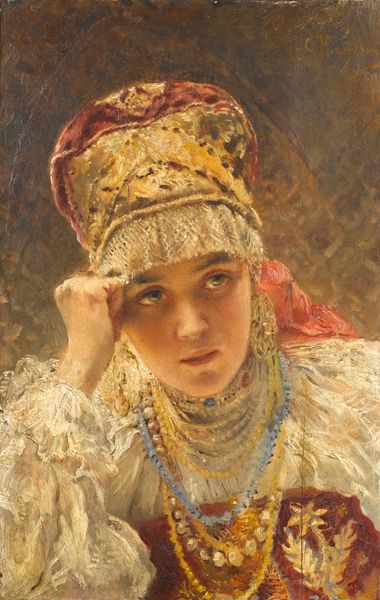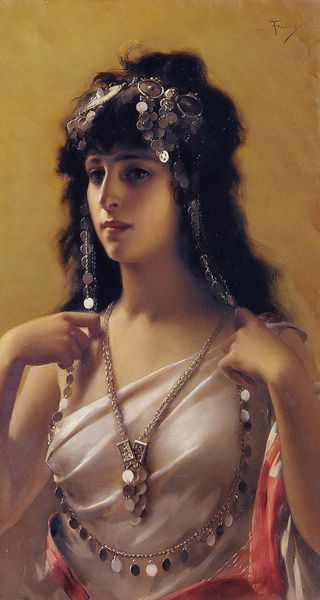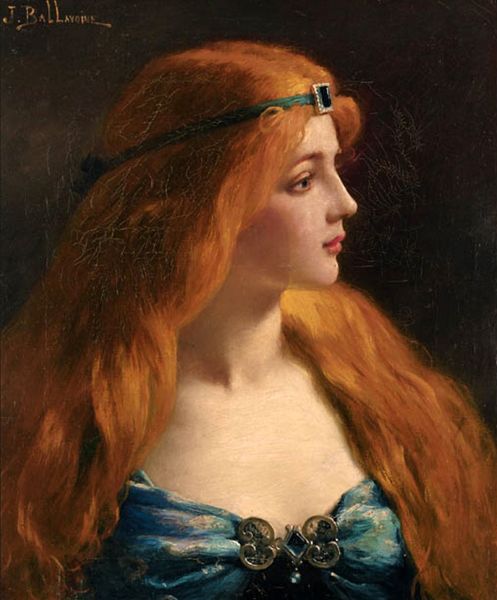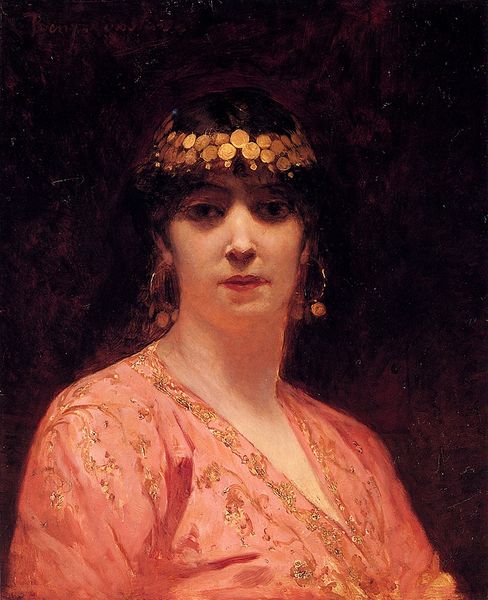
Copyright: Public Domain: Artvee
Curator: Looking at Jules Joseph Lefebvre’s "Fatima," completed in 1883, one immediately notes a studied realism coupled with a certain exoticism, a prominent style during this period. What strikes you first about this piece? Editor: There's an immediate sense of melancholy about her. The way she averts her gaze, coupled with the somber tones, creates a poignant, almost wistful mood. Curator: Indeed, that averted gaze is a recurring motif in many portraits from this time, meant to convey a sense of modesty or inner reflection. Her attire, especially the coin headdress, speaks volumes about the Orientalist movement's fascination with North African cultures. The use of such imagery, I believe, allowed European audiences to project their romantic fantasies and power dynamics. Editor: The coin headdress particularly captures the orientalist theme. Do you see it only through a colonial lens, or are there deeper cultural significances embedded that might resist such easy categorization? Could these symbols mean more to her, her family, her people, and us as observers, who may project personal associations to it? Curator: A balanced assessment requires understanding both the historical power dynamics and the potential for richer, personalized readings. While colonial context is crucial, we must acknowledge the sitter's role in embodying cultural pride, even agency. These were objects of family wealth and cultural identity, seen through a colonial lens but carrying generations of ancestral pride for many wearers. Editor: Yes. And this resonates with the way light catches the coins; their slight disarray makes the figure seem alive. But let's not romanticize. Even in Lefebvre's realistic rendering, it is evident that "Fatima" lives in the Western gaze. This raises key questions about appropriation, representation, and the ethics of spectatorship. Curator: Absolutely. By displaying art from various perspectives, it’s possible to ignite discussions about art's potential to construct as much as to reveal. We can appreciate technical skill while also prompting reflection. Editor: Precisely, which also reveals what we're looking for when we engage with art in a broader social conversation about history.
Comments
No comments
Be the first to comment and join the conversation on the ultimate creative platform.
